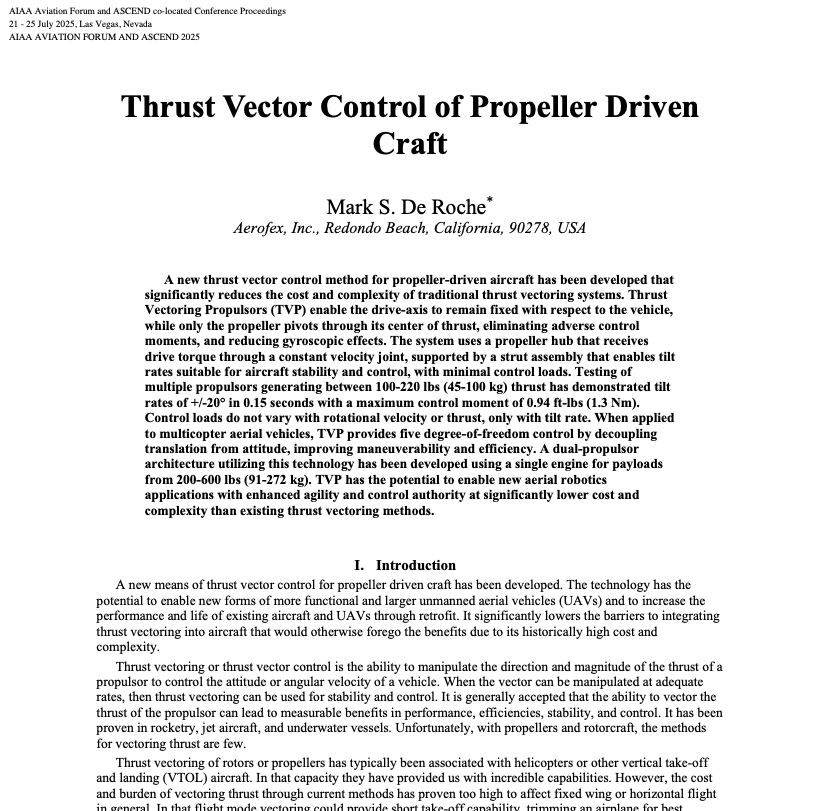Propeller orientation is a compromise. It is set at the factory by shimming the engine to position the propeller for a particular mode of flight – usually cruise. Often an offset is added to compensate for P-factor or pitch change tendencies with throttle.
The optimum orientation of a propeller is more dynamic. It depends on the center of gravity (CG) of the aircraft, its center of lift, and the airflow around it. All three change in flight.
The location of the center of gravity (CG) differs for every flight, and changes in flight as fuel is consumed. The center of lift changes with wing configuration as the ailerons or flaps are moved.
The fixity of a conventional propeller to the aircraft ensures it is rarely in its most efficient orientation, so fuel is burned to generate more thrust than would otherwise be required.
In an ideal world, range is increased and emissions reduced by actively aligning the propulsor’s thrust with the changing characteristics of the aircraft and its environment.
A wing is much more effective at generating lift than the propeller. When an airplane pitches its nose-up to climb, the vertical thrust component generated by the propeller is an impediment – not a bonus. It creates a pitch moment that must be countered by the tail or control surfaces which adds to drag.
It also adds the P-factor (propeller factor). P-factor is an aerodynamic phenomena that occurs when an aircraft propeller is at a high angle of attack with respect to the incoming airflow such as during a climb, go-around, or in slow flight. It is a very real occurrence that every pilot (or flight controller) recognizes, as the asymmetric thrust it creates requires corrective yaw input which increases drag and inefficiency.
Vectoring propulsors can eliminate the P-factor altogether, and the yaw correction required. Regardless of the angle of attack of the craft, the propulsor itself remains generally in line with the airflow.
Gyroscopic precession is a separate phenomena that occurs when changing the axis of rotation of a spinning body with respect to the earth frame of reference – not the aircraft’s. Typically, it creates an unwanted adverse moment. The aircraft depicted at left would experience only small precession moments, as its propulsor moves only slightly with respect to the earth, despite the large control moments imparted on the vehicle.
Full vehicle control without control surfaces or a tail.
Together, two propulsors generate thrust-powered pitch, roll, and yaw moments delivering consistent control authority in all phases of flight – independent of airspeed.
The result is extreme maneuverability, providing the same evasive capabilities and precision flight that has redefined survivability and lethality in combat aircraft. The combination reduces take-off distance and enables inverted and controlled post-stall flight.
Eliminating the tail and control surfaces enables rapid vehicle development with a single system for propulsion and control that reduces modeling and mechanisms, and simplifies control laws.
Motors and engines can be mounted remotely, closer to the CG to reduce inertia, or in the thickest part of the wing to preserve the airflow over the trailing edge.
It is a game changer.

It begins with a conversation